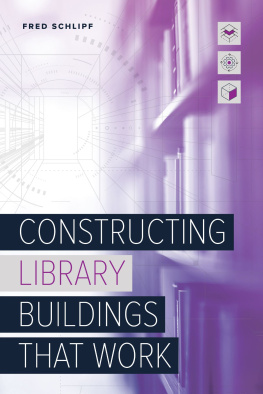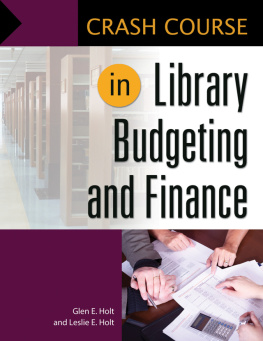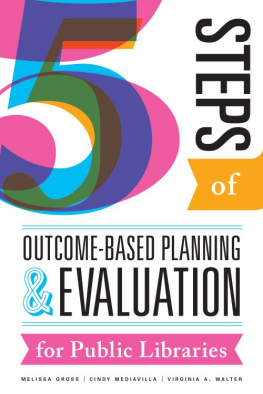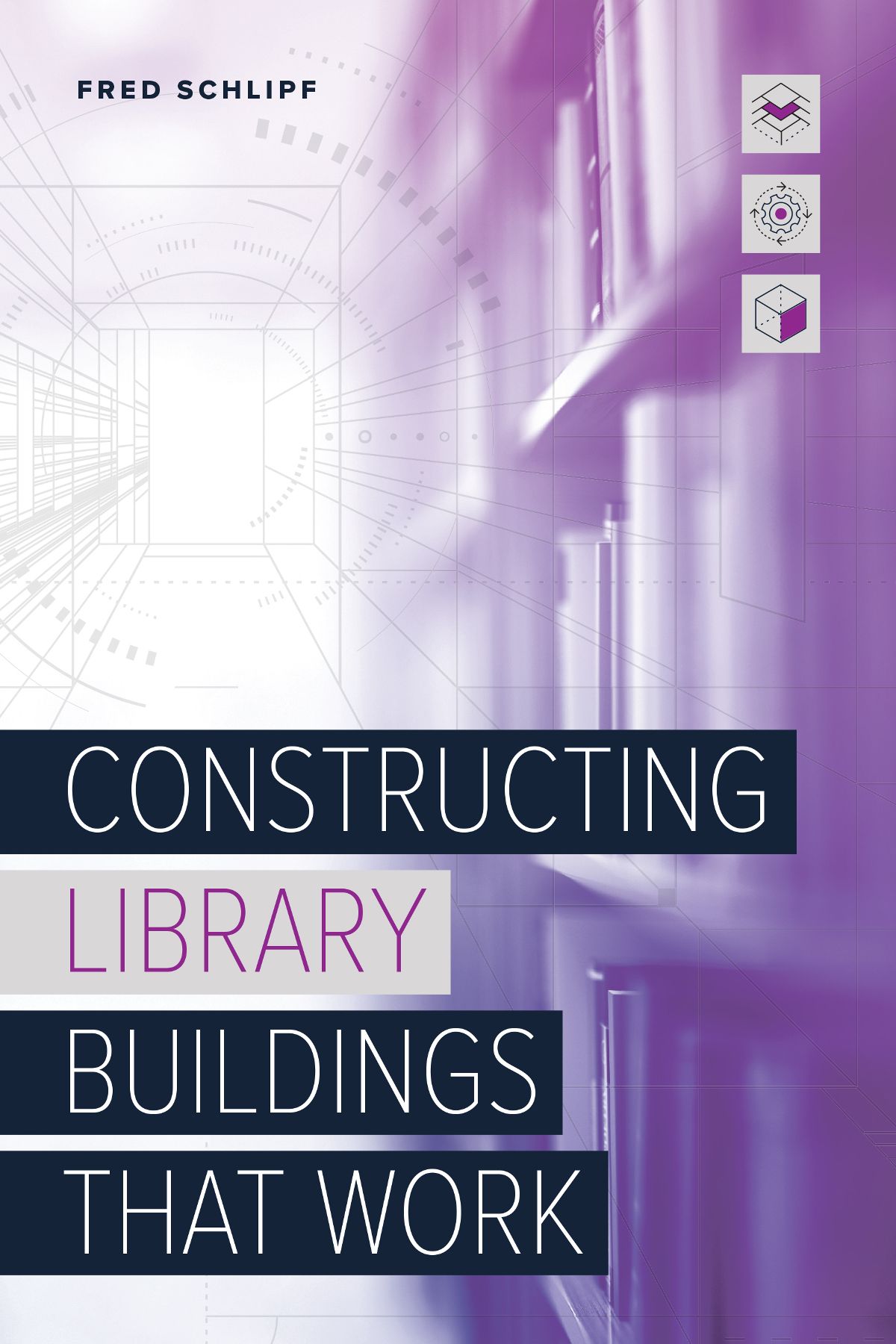
ALA Editions purchases fund advocacy, awareness, and accreditation programs for library professionals worldwide.
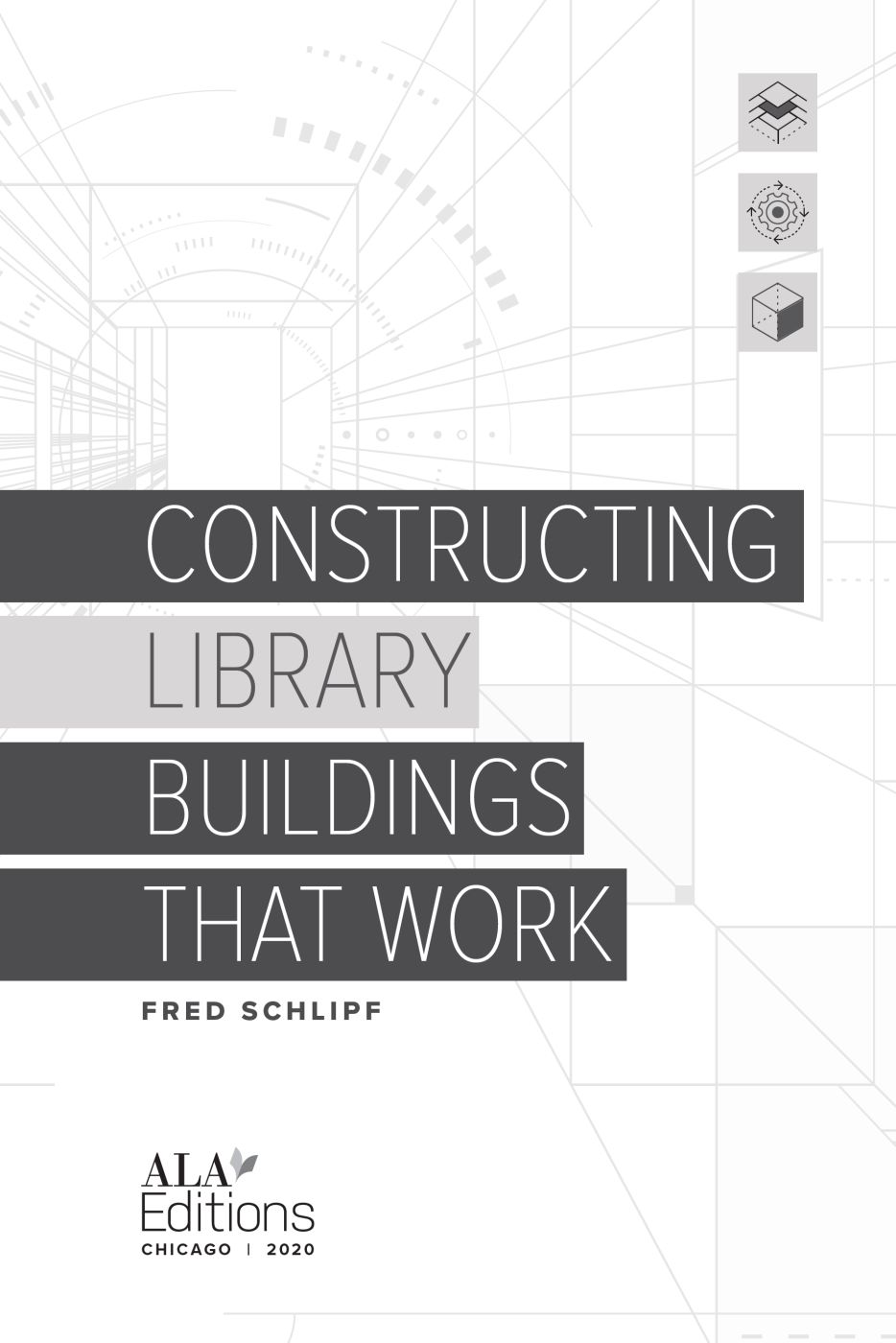
FRED SCHLIPF has been hanging out in library buildings since the early 1940s (at about the age of four, he turned out all the lights in the Detroit Lakes (MN) Public Library one eveninga happy moment that is still both bright and dark in his memory), and he has been working for libraries, teaching about libraries, and consulting on library buildings since he was 17. Hes been a library school faculty member for over 50 years, and he spent nearly 33 years as director of The Urbana Free Library, the public library of Urbana, Illinois (just down the street from the University of Illinois). Hes done formal building consulting for between 150 and 200 libraries and quick consulting for many more, and he visits library buildings everywhere he goes. He has a BA from College and an MA and PhD from the Graduate Library School of the University of Chicago. He has served on dozens of committees and task forces of the American Library Association, Illinois State Library, Illinois Library Association, local library groups in Illinois, and the Illuminating Engineering Society of North America. He was Illinois Librarian of the Year in 2000.
2020 by Fred Schlipf
Extensive effort has gone into ensuring the reliability of the information in this book; however, the publisher makes no warranty, express or implied, with respect to the material contained herein.
ISBNs
978-0-8389-4758-6 (paper)
978-0-8389-4762-3 (PDF)
978-0-8389-4761-6 (ePub)
978-0-8389-4763-0 (Kindle)
Library of Congress Cataloging-in-Publication Data
Names: Schlipf, Frederick A., author.
Title: Constructing library buildings that work / Fred Schlipf.
Description: Chicago : ALA Editions, 2020. | Includes bibliographical references and index. | Summary: This book covers the essential basics of the library construction process and how to construct successful library buildingsProvided by publisher.
Identifiers: LCCN 2020015691 (print) | LCCN 2020015692 (ebook) | ISBN 9780838947586 (paperback) | ISBN 9780838947616 (epub) | ISBN 9780838947623 (pdf) | ISBN 9780838947630 (kindle edition)
Subjects: LCSH: Library architectureHandbooks, manuals, etc. | Library buildingsDesign and constructionHandbooks, manuals, etc. | Library fittings and suppliesHandbooks, manuals, etc. | Library architectureUnited StatesHandbooks, manuals, etc. | Library buildingsUnited StatesHandbooks, manuals, etc. | Library fittings and suppliesUnited StatesHandbooks, manuals, etc.
Classification: LCC Z679 .S327 2020 (print) | LCC Z679 (ebook) | DDC 727/.8dc23
LC record available at https://lccn.loc.gov/2020015691
LC ebook record available at https://lccn.loc.gov/2020015692
CONTENTS
ALTHOUGH THIS IS an entirely new book, it was influenced by the book on library buildings that John A. Moorman and I wrote and ALA Editions published in 2018: The Practical Handbook of Library Architecture: Creating Building Spaces That Work.
John and I have spent most of our lives in library buildings. Both of us have been library users since early childhood, student library employees, library administrators, library building consultants, and professors of library science specializing in library building design.
We think that between us as students we did almost every possible frontline job in libraries, ranging from cleaning floors to reshelving books, driving bookmobiles, providing reference and reader guidance, telling childrens stories, working at lending desks, making displays, cataloging new books, and removing frogs introduced into water features by scientifically minded library users.
Over the years, John and I visited hundreds of library buildings and talked with thousands of library users and staff members, always asking people what they liked (and didnt like) and why. So this book (like the Practical Handbook) is in many ways a group effort by a very substantial number of people.
I want to thank several people who read and commented on this new book:
- Celeste Choate , executive director of The Urbana Free Library (my old library)
- Julie Derden , a professional librarian at the Illinois State University library in Normal
- Jim Derden , Julies husband, who is a former contractor and retired from State Farm Insurance, where he taught claims adjusters how to evaluate damage to buildings
- My wife, Diane Hillard , who looked for places in this book where she had no idea what I was trying to say. And found them.
- John Howard , director of the Mahomet, Illinois, public library, who reviewed the section on finance
- My son, Karl Schlipf , a computer specialist for the University of Illinois, who led me through complex computer processes when I was awash in seas of electronic troubles
I also want to thank the ALA Editions staff who helped make this book possible:
- Jamie Santoro , senior acquisitions editor, ALA Editions
- Samantha Imburgia , managing editor, ALA Editions
Without their leadership, help, advice, and encouragement, this book would never have been written and published.
FRED SCHLIPF
Urbana, Illinois
THIS HOW-TO-DO-IT BOOK on library buildings is written for librarians, library owners, library directors, and other administratorsthe many people responsible for the practical design and construction of library buildings. Because of its focus on functional design, it includes no pretty pictures of library buildings.
This book is intended to cover as many important points as possible in the least possible space so that busy people can read it in the course of a long afternoon or a handful of lunch hours. It is intended to balance John A. Moormans and my Practical Handbook of Library Architecture: Creating Building Spaces That Work, which was published by ALA Editions in 2018.
In the Practical Handbook of Library Architecture, John and I tried to provide a detailed account of all the steps involved in the planning and construction of library buildings, as well as discussing good and bad design decisions in a wide variety of functional areas. We included many sidebars with stories of the experiences of individual libraries, a variety of photographs and drawings, and a detailed glossary.
The result was a book more than 1,000 pages long. Although one of my students read it from cover to cover in three long days, I assume that many readers who are not personally embarking on major construction projects will find it far too long to read in just one or even several sittings, and that they will instead skip around as we intended, reading specific sections that apply most directly to their current projects or problems.
The Practical Handbook of Library Architecture received good reviews, but it soon became obvious that what was needed was an additional, more concise volume that actually could be read cover-to-cover in a single afternoon rather than in three long days.
There is also a need for a book designed for readers who are involved with library buildings at a less direct level, including boards and administrators of academic institutions, public library boards, city councils and city administrators, school board members and school administrators, and corporate staff members responsible for corporate libraries.
Next page
